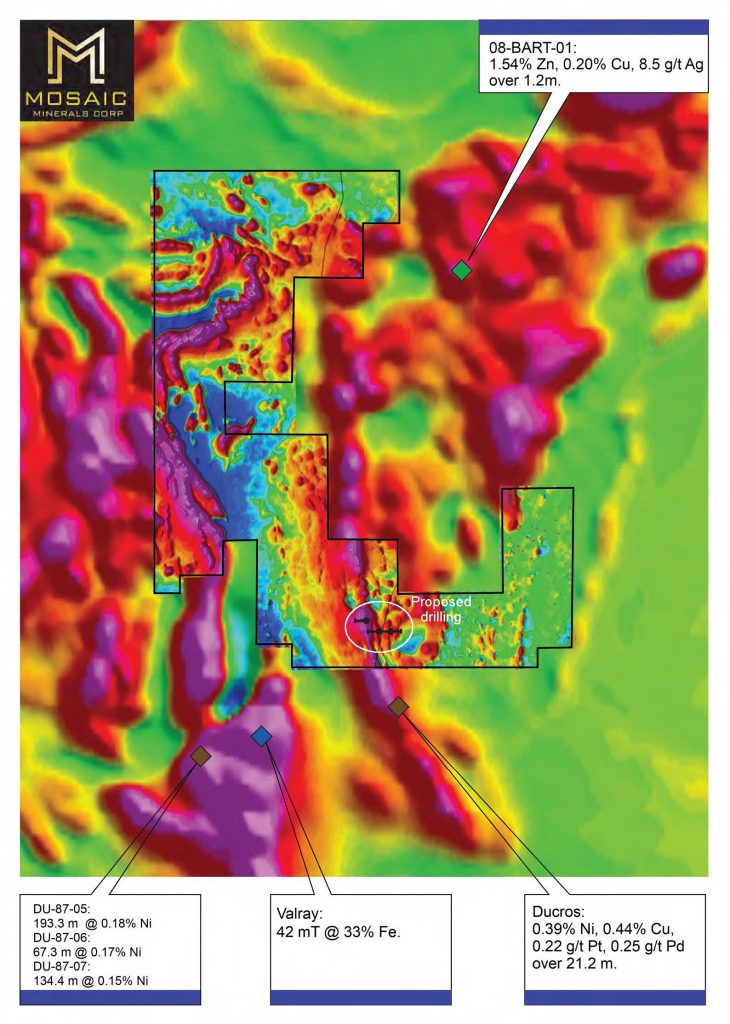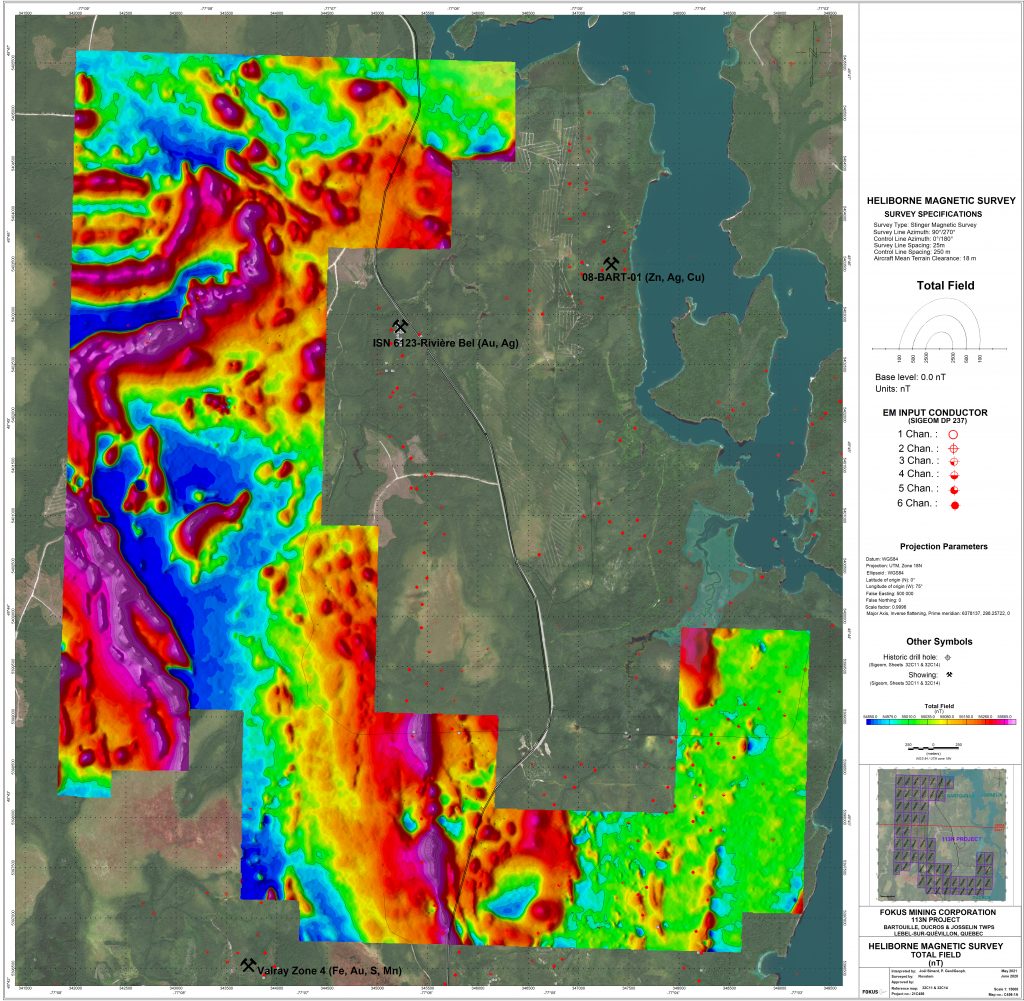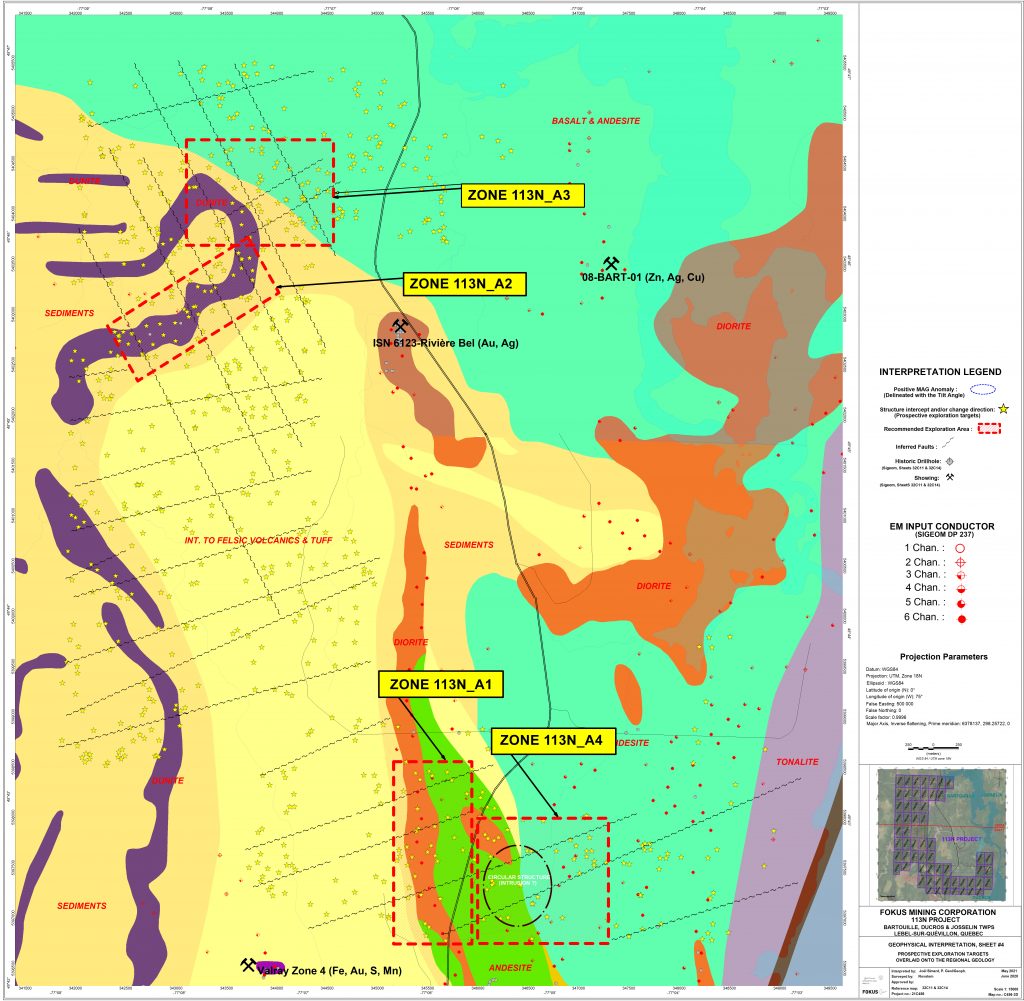The 113 North project is located in the southeastern part of the Abitibi greenstone belt and is comprised of 59 claims totalling 3010 ha within a 6-to12-kilometer-wide band made up of volcano-sedimentary rocks located between the granodiorite-tonalite batholiths of Josselin and Montgay. The volcanic rocks of this group exhibit felsic, intermediate and mafic compositions and are intersected by dunite, gabbro and diorite dykes. Iron formations (sulphides and oxides) and clastic sedimentary rocks, such as greywackes and shales, are also present.
Gold, copper, nickel, platinum and palladium showings were discovered in this geological environment near the project.
The company plans to carry out a diamond drilling program of approximately 2,500 m during the current year on this project.

“ We are very pleased to add this project to our portfolio of base metal exploration projects. The geological environment of 113North as well as the various geophysical informations allows us to set up a first drilling program as soon as possible in order to test potential targets. With the drilling targets recently established on the Gaboury project in Témiscamingue, Mosaïc should be much more active in the coming months,” said Jonathan Hamel, CEO of the company
A very high-resolution aeromagnetic survey was recently carried out on the property. The interpretation of the survey showed the presence of four prospective areas. A first is located in the extension of the diorite associated with the Ducros showing to the south of the property. Many INPUT conductors have been identified along the diorite. A second area of interest is located just east of the first and shows a circular magnetic anomaly suggesting the presence of a deep intrusion. INPUT conductors have also been detected in this favorable area. Two other favorable zones are located in the dunite intrusions in the north part of the property and are showing a high entropy thus suggesting a strong structural deformation. These areas are favourable for Ni-PGE magmatic sulphide deposits.
In 2001, a pyroxenite intrusion located 400 m south of the project was excavated over 100 m. A mineralized zone at the northern contact of the intrusion with the volcanics was observed over 20 m long by 10 m wide. A GCF-08-07 historical diamond drill hole revealed grades of 0.4396 ppm Cu, 0.3742 ppm Ni, 0.25 g/t Pt, 0.23 g/t Pd and 0.18g/t Au over 21.20 m ( Source :GM 65886). The mineralization is composed pyrite, pyrrhotite, pentlandite and chalcopyrite are found in varying concentrations in the rock. This type of mineralization resembles new discoveries from Dana Township in Ontario as well as contact facies observed in the Sudbury area.

The aeromagnetic survey shows that this package of rocks trends towards the property and input conductors may indicate the presence of sulphide mineralization.
A package of 4 Algoma type iron formations discovered in 1936 was traced for roughly 2 km about 1 200m south of the property. Their general trend is NS. They were traced over lengths varying from 80 to 390 m and widths varying from 15 to 95m to a depth of 210m. The iron formations appear in two facies, that of sulphides (pyrite, pyrrhotite) and that of oxides (magnetite). The main host rock is an impure quartzite, with sugary texture and often brecciated. This unit is interbedded with conglomeratic sandstones and fine to medium grained greywacke. Sedimentary rocks are in discordant contact with felsic tuffs. A sill of serpentinized dunite of komatiitic affinity is present nearby. A zone rich in talc characterize the contact between the iron formation and the dunite. Mineralization consists of disseminated to massive sulphides (pyrrhotite and pyrite) and oxides (magnetite) in iron formations and quartzite. Dunite contains between 10 and 15% magnetite. An historical resource of 42 mT at 33% Fe has been published on this deposit (GM 7746, GM47628).
The 08-BART-01 showing is located 1700 m northeast of the property and hole 08-BART-01 intersected a mineralized zone containing 1.54% Zn, 0.2% Cu and 8.5 g / t Ag over 1.2 m (GM 64381). The mineralization is found in graphitic sediments that are part of the volcano-sedimentary sequence of the Desboues formation.

